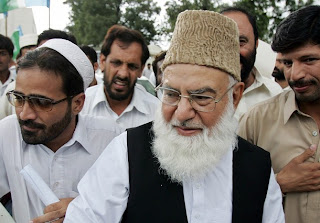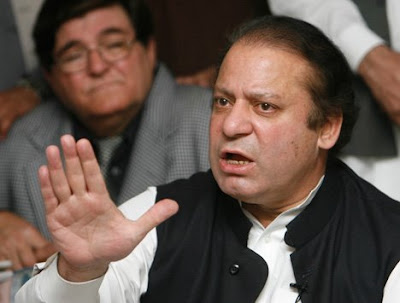However, most of these protests have fallen on deaf ears. A public interest litigation filed in the Punjab and Haryana High Court in September 2008 was dismissed, and the initial stay given on the petition was vacated. The order of dismissal signed by Chief Justice TS Thakur and judge Surya Kant says: “If the Government, the Trust and the Managing Committee have put their heads together and conceived a plan intended to revitalise and preserve the Memorial (sic)for the future generations, we see no reason why the petitioner should find fault with the same, particularly in exercise of the extraordinary public interest writ jurisdiction of the court.”
we see no reason why the petitioner should find fault with the same, particularly in exercise of the extraordinary public interest writ jurisdiction of the court.”
The background goes like this. In 1923, the trust purchased land for the project from the Jallewala Sardars at a hiked-up price of Rs 5.65 lakh. The money was gathered by an international appeal for a memorial issued by Mahatma Gandhi. The British Government in India was keen to turn the Jallianwala Bagh into a cloth market so that all traces of the incident were wiped out. Nationalist leaders, however, formed a committee headed by Madan Mohan Malviya. The land was purchased from the Jallewala Sardars at a hiked up price of Rs 5.65 lakh.
The money was gathered by an international appeal for a memorial issued by Mahatma Gandhi. The upkeep of Jallianwala has been with a Mukherjee family of Bengal. S.C. Mukherjee, an associate of Malviya, was appointed the first secretary of the Trust. It subsequently went to his son and now to his grandson S. Mukherjee. A memorial designed by American architect Benjamin Polk was built on the site and inaugurated by the then-President of India, Dr. Rajendra Prasad, on 13 April 1961, in the presence of Jawaharlal Nehru and other leaders.
A flame was later added to the site. However, the past few decades have seen the monument in neglect and decay with only a fraction of the people who come to the splendorous Golden Temple next doors visiting it. Interestingly, the Jallianwala Bagh National Memorial Committee is headed by the Prime Minister of the country. But in spite of the high profile management, the memorial suffered complete neglect during the past many decades.....Continue
 we see no reason why the petitioner should find fault with the same, particularly in exercise of the extraordinary public interest writ jurisdiction of the court.”
we see no reason why the petitioner should find fault with the same, particularly in exercise of the extraordinary public interest writ jurisdiction of the court.”The background goes like this. In 1923, the trust purchased land for the project from the Jallewala Sardars at a hiked-up price of Rs 5.65 lakh. The money was gathered by an international appeal for a memorial issued by Mahatma Gandhi. The British Government in India was keen to turn the Jallianwala Bagh into a cloth market so that all traces of the incident were wiped out. Nationalist leaders, however, formed a committee headed by Madan Mohan Malviya. The land was purchased from the Jallewala Sardars at a hiked up price of Rs 5.65 lakh.
The money was gathered by an international appeal for a memorial issued by Mahatma Gandhi. The upkeep of Jallianwala has been with a Mukherjee family of Bengal. S.C. Mukherjee, an associate of Malviya, was appointed the first secretary of the Trust. It subsequently went to his son and now to his grandson S. Mukherjee. A memorial designed by American architect Benjamin Polk was built on the site and inaugurated by the then-President of India, Dr. Rajendra Prasad, on 13 April 1961, in the presence of Jawaharlal Nehru and other leaders.
A flame was later added to the site. However, the past few decades have seen the monument in neglect and decay with only a fraction of the people who come to the splendorous Golden Temple next doors visiting it. Interestingly, the Jallianwala Bagh National Memorial Committee is headed by the Prime Minister of the country. But in spite of the high profile management, the memorial suffered complete neglect during the past many decades.....Continue












 iniquitous tax, hurts the poor more than the rich, and must be undoubtedly contained. To that effect, the banking industry seems to have paid heed to RBI Governor Y.V. Reddy’s suggestion (or was it an order?) that “net interest margin of banks was high and there was scope for reducing lending rates.” Considering the fact that non-food credit off-take has come down in the recent past, large banks like SBI, HDFC and ICICI decided to bring down the rates. Thanks to the ‘peer fear’, other banks are falling in line. Increasing credit flow to small scale and medium enterprises, and providing a boost to the housing sector as well as to other productive sectors are amongst the few cited positive effects of the rate slash. But in reality, have banks bent down because of a political diktat from the finance ministry?
iniquitous tax, hurts the poor more than the rich, and must be undoubtedly contained. To that effect, the banking industry seems to have paid heed to RBI Governor Y.V. Reddy’s suggestion (or was it an order?) that “net interest margin of banks was high and there was scope for reducing lending rates.” Considering the fact that non-food credit off-take has come down in the recent past, large banks like SBI, HDFC and ICICI decided to bring down the rates. Thanks to the ‘peer fear’, other banks are falling in line. Increasing credit flow to small scale and medium enterprises, and providing a boost to the housing sector as well as to other productive sectors are amongst the few cited positive effects of the rate slash. But in reality, have banks bent down because of a political diktat from the finance ministry? of FY 2007 at 4.9% (its fastest pace in the last four years), many felt that the worst was over. But, as the US Commerce Department, on January 30, came out with the latest numbers, it only provided further credence to the arguments that the US is knocking on the door of recession, if not already in.
of FY 2007 at 4.9% (its fastest pace in the last four years), many felt that the worst was over. But, as the US Commerce Department, on January 30, came out with the latest numbers, it only provided further credence to the arguments that the US is knocking on the door of recession, if not already in. as the minister. Do you see a situation wherein the national carriers could become minor players in the company of many private operators, big and small? Although the number of passengers carried by the national carriers has increased considerably, registering a growth of almost 25%, the market share has been impacted due to the entry of private airlines, availability of low cost carriers, decline in capacity share, and delay in acquisition of new and latest technology aircraft. However, a number of initiatives have been undertaken like acquisition of new aircraft, merger of Indian and Air India, aggressive marketing and sales initiatives, which has resulted in marked improvements in market share.
as the minister. Do you see a situation wherein the national carriers could become minor players in the company of many private operators, big and small? Although the number of passengers carried by the national carriers has increased considerably, registering a growth of almost 25%, the market share has been impacted due to the entry of private airlines, availability of low cost carriers, decline in capacity share, and delay in acquisition of new and latest technology aircraft. However, a number of initiatives have been undertaken like acquisition of new aircraft, merger of Indian and Air India, aggressive marketing and sales initiatives, which has resulted in marked improvements in market share. as a cricket administration institution and as a positive for the team is not up to the mark. “It’s easy to manipulate the masses when it comes to winning elections. But to really manage the Indian cricket team, you need to be an emotionally intellectual person, which Pawar isn’t at all,” feels a former cricketer who knows the BCCI President for the past five years. For instance, they say that the BCCI shouldn’t have been so quick in asking the Indian team to continue with the current Australian tour after what happened during the second test at Sydney. It should have waited to gauge the mood of the team and taken into account the feelings of the manager. In the end, BCCI had to backtrack and use its clout to force the ICC to arrive at a face-saving solution.
as a cricket administration institution and as a positive for the team is not up to the mark. “It’s easy to manipulate the masses when it comes to winning elections. But to really manage the Indian cricket team, you need to be an emotionally intellectual person, which Pawar isn’t at all,” feels a former cricketer who knows the BCCI President for the past five years. For instance, they say that the BCCI shouldn’t have been so quick in asking the Indian team to continue with the current Australian tour after what happened during the second test at Sydney. It should have waited to gauge the mood of the team and taken into account the feelings of the manager. In the end, BCCI had to backtrack and use its clout to force the ICC to arrive at a face-saving solution. Paper No. 99 named Dreaming with BRICs: Path to 2050 is no news now-a-days, at least in India, given the impunity with which this has often been referred to by nation’s polity and policy makers to showcase the bright future of our country. And also as if forewarn all those, who are yet to make up their minds about investing in India or take it seriously, as to what a grave mistake they would commit if they gloss over the writing on the wall.
Paper No. 99 named Dreaming with BRICs: Path to 2050 is no news now-a-days, at least in India, given the impunity with which this has often been referred to by nation’s polity and policy makers to showcase the bright future of our country. And also as if forewarn all those, who are yet to make up their minds about investing in India or take it seriously, as to what a grave mistake they would commit if they gloss over the writing on the wall.